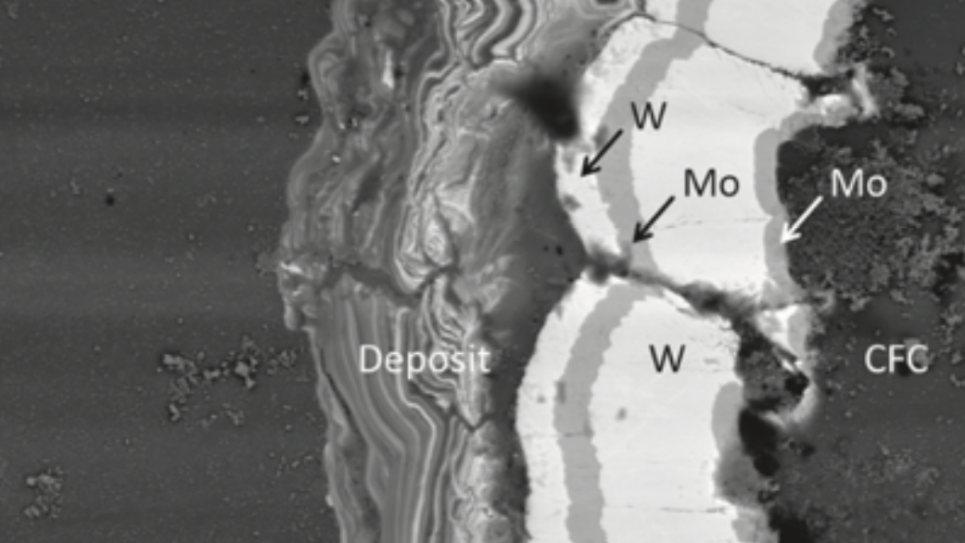
SEM image of a divertor tile taken from JET after the first ITER-like wall campaign [7]. Complex mixed materials layers form at the divertor surface from impurities in the plasma.
These simulations carried out by this team will help design new materials that can withstand the harsh environments created by fusion reactors.
The goal of this project is to understand how plasma-facing metal alloys in fusion energy reactors degrade under bombardment by helium, hydrogen, and neutrons, by performing atomistic simulations of these materials at unprecedented scales and accuracy levels. The FitSNAP software will be used to develop SNAP high accuracy machine learning interatomic potentials describing implantation of hydrogen, helium, beryllium, and nitrogen. A similar approach will be used to describe neutron damage in tungsten-based refractory high entropy alloys. These simulations will help design new materials that can withstand the harsh fusion reactor environment. These novel simulations are achievable on DOE leadership class computing resources due to extensive Kokkos-based GPU optimization of the SNAP force kernel in the LAMMPS simulation code through the DOE Exascale Computing Project. The FitSNAP/LAMMPS/Kokkos/SNAP capability allows for quantum-accurate atomistic simulations of chemically complex materials at the plasma-material interface approaching realistic plasma environments.